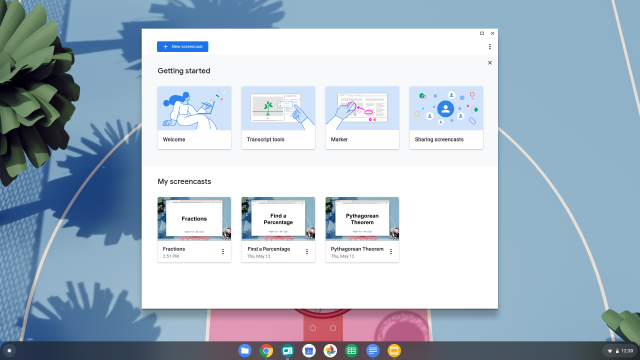In December 2020, in an article for secondary education magazine SecEd I made the case that despite the “wealth of evidence” (Agarwal et al, 2021) about the “reliable advantage” (Yang et al, 2021) of test-enhanced learning – more commonly referred to as the ‘testing effect’ or ‘retrieval practice’ – it is actually far more complicated than it is often presented. What followed was a series of nine articles, outlining various contributory factors and a bevy of teaching signposts and practical tips.
Taking the complex idea behind test-enhance learning and simplifying them, doesn’t make it less complicated. So forgive me, when I attempt to deliver the insights of 40,000+ words in approximately 1500 words. Fasten your seat-belts. Feel free to ask questions or join the discussion.
A Model of Memory
“Without an understanding of human cognitive architecture, instruction is blind,” Sweller (2017).
When it comes to cognition – to thinking – theory is unavoidable. Therefore, a model is almost always inevitable. And a model, generative of pedagogical strategies, helps us understand the mechanics or processes of test enhanced learning. For the purpose of a shared understanding, let’s go with Willingham’s (2009) Simple Model of Memory (other models are of course available). A model that highlights the abstract cognitive processing of encoding1, storage2, and retrieval3. Where attention is the primary gatekeeper of learning, and relearning, and the ultimate commodity of our classrooms.
Encoding1: The process by which information moves from short-term to long-term memory.
Storage2: Securing newly acquired information into memory and maintaining it.
Retrieval3: Accessing learned information held in long-term memory.
Adding a little meat to these bare bones: Accessing learning information, “using our memory shapes our memories,” Bjork (2012). Moreover, the information we recall and access become “more retrievable in the future and things in competition with that gradually become less usable,”Bjork (2012). In that sense, memory is reconstructive rather than objective. It is dynamic, forever changing, rather than static. And repeated retrieval and re-encounters helps you students build accessing, networked, adaptive, durable memories. To paraphrase the eloquent Sarah Cottingham @overpracticed think “Less library system and more ecosystem.”
A short word about forgetting and quick word about relearning
Our memories (what we attend to) are encoded (and possibly consolidated), stored and connected to be retrieved or forgotten. That encoding and retrieval are two distinct phases is important knowledge (we will return to this important point later).
Second, knowledge of forgetting is also important. Once teachers foresee that their teaching and pupil learning, remembering and relearning, is a process and not a product, we can anticipate the requirement to reteach. (P.S. This is where testing is so valuable, signposting what to reteach and to whom). What is at first quirky, tricky to get a handle on, is that ‘some’ forgetting, or spacing, is actually helpful to learning.
“Remembering is greatly aided if the first presentation is forgotten to some extent before the repetition occurs.” (Roediger & Karpicke, 2011)
If we anticipate the requirement to reteach, we need to use forgetting, (spacing) in a way which delicately balances the effort needed to retrieve information with the likelihood of successful retrieval.
Let’s circle back around to “encoding and retrieval are two distinct phases.”
“Effort is vital and we must warn students of this fact: Human memory is fragile. The initial acquisition of knowledge is slow and effortful. And once mastery is achieved, the knowledge must be exercised periodically to mitigate forgetting.” (Lindsey et al, 2014).
Encoding (learning) is often pedestrian, information may or not may have been stored in long-term memory, it is often difficult to access. Retrieval, remembering or relearning on the other hand, is much more efficient. Knowing this, will impact upon how you employ testing to enhance learning.
Why test-enhanced learning
Suffice to say that given “the strong evidence for its [retrieval] memorial benefits, many cognitive and educational psychologists now classify testing as among the most effective educational techniques discovered to date,” (Pan & Rickard, 2018).
“Testing is not only an assessment of learning but also an assessment for learning.” Yang et al, 2021.
The historic 2011 Roediger et al paper offered us “10 benefits of testing and their applications to educational practice.” With just 1500 words at my disposal, you only get a summary, testing: aids retention; identifies gaps in knowledge; causes students to learn more from the next learning episode; better organisation of knowledge; improves transfer of knowledge to new contexts; facilitates retrieval of information that was not tested (I know this sounds odd, but it is true); metacognitive monitoring; prevents interference; feedback to instructors; encourages students to study.
In the past ten years, we have evidence to add to Roediger’s paper. Where testing is used to enhance learning, students prepare better for lessons, take more notes, are more focused or less distracted (mind wandering) in lessons, are less anxious about exams, more resistant to stress, and have improved attendance.
It is a broad and convincing argument.
As Dr Tom Perry, who led the Education Endowment Foundation’s Cognitive Science Approaches in the Classroom review (Perry et al, 2021), summarised in a recent conversation, “We know a huge amount about learning, memory, cognition, attention, and it’s creating some really powerful and practical principles that we can trust.” But now it’s over to the educators, he said, “to really work out what good looks like in their own contexts”.
‘How’ in two phases and seven steps
Tom Sherrington is right to issue a warning shot at “rigid, formulaic quizzing regime[s]” and “performative quizzing.” However, get test-enhanced learning right, during encoding and as retrieval, and you can make a healthy contribution to the direct and indirect effectiveness of your teaching and the outcomes for your pupils. But it is the second retrieval, the relearning, that is more important. The potency is not in the learning, but in the successive relearning. (Think about returning to a task after an extended break. Riding a bike, roller-skating, speaking a language? It didn’t take as long or as much effort second time around, right?)
Directly secure superior long-term retention, durability, accessibility and transfer of knowledge. Indirectly, as a vehicle for motivation, increased investment and attention in lessons and by providing a framework from which students can adapt their own learning and relearning.
Step 1: Explicitly define the knowledge – Teacher knowledge is at the heart of test enhanced learning.
Step 2: Design a testing routine. Teacher expertise is at the heart of retrieval.
Step 3: Lead the approach. And when I say lead, also teach the pupils why testing is such a powerful approach to learning.
Step 4: Design for low failure rates. Learning is emotional and emotions influence adolescents’ achievement, over and above the effects of general cognitive ability and prior accomplishments. The optimal error rate ‘could’ be as low as 15% (Wilson et al, 2019) or even lower (Eglington et al, 2020). Plan for 85% success – especially during encoding.
Design for low failure rates
| Increase success | Increase difficulty |
| During encoding | During retrieval |
| Use recognition recall: Matched pairs, Multiple-Choice style questions, fill-in-the-blanks. | Use free recall or cued questions, or reverse the cue eg Q&A and A&Q |
| Retrieve more recent learning ordeeply rooted learning; rather thanselecting new retrieval prompts, retrieve then reorder | Extend the chronological reference. Retrieve learning from last term, or even last year(s)!Misalign the retrieval tasks, set homeworks from the previous topic. |
| Shorten time intervals, (Eglington et al, 2020). | Extend time intervals |
| Reduce the breadth of knowledge being probed | Extend the breadth or weight of knowledge being probed |
| Cue the retrieval, extend the cue(s) use hints | Remove cues – free recall |
| Massed practiced retrieval – selecting the same retrieval prompts repeatedly, or reorder* the prompts | Spaced practice: Select newretrieval prompts from the sametopic or refresh the cards |
| Block retrieval – securing high success rates on a set of flashcards before progressing) | Interleave retrieval, new prompts from across topics |
| Self-paced | Time pressured |
Step 5: Testing and self-assessment develops metacognitive monitoring and enhances metacognition accuracy, (Rivers, 2020), directing more informed study decisions.
Step 6: Testing as homework, or self-directed testing, can be very effective.
Step 7: The most efficient retrieval schedule is a personalised one, accounting for the learner’s rates of forgetting and prior knowledge, (Latimer et al, 2021). There are tools that support personalised spaced retrieval practice.
Regrettably, the term “retrieval” remains misleading. If implies a terminal strategy. A test at the end. A test, post learning.
Testing is, and informs, learning. It is more than retrieval.
“I’ve said it before, and I’ll say it a million times more: the first time students retrieve shouldn’t be on a … final exam.” Renowned Cognitive Psychologist, Pooja Agarwal.
And we have not yet mentioned the benefits of pre-testing or potentiated learning, testing during learning.



